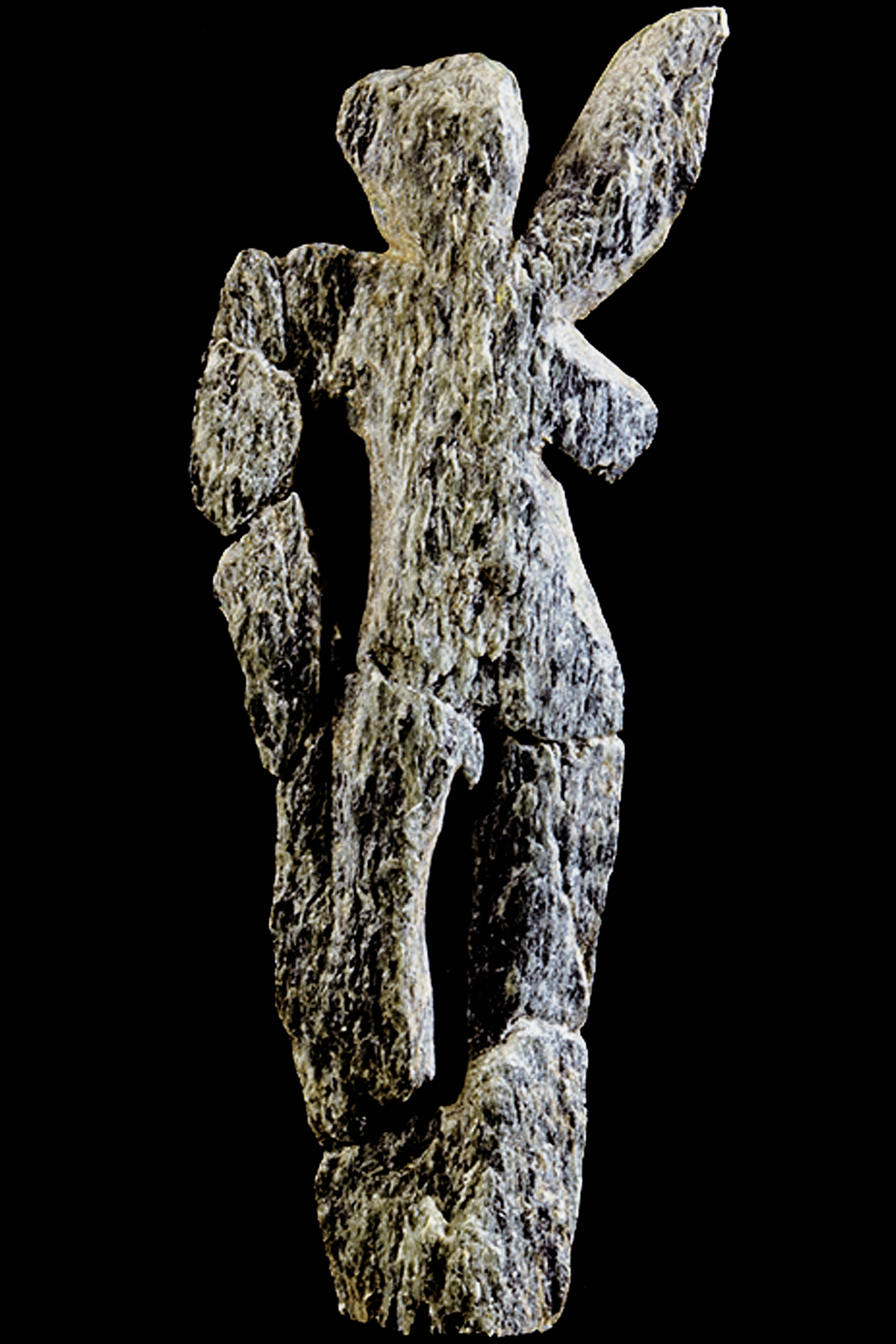One of the oldest human sculptures in the world, this figure of a nude woman dancing was found broken in eight pieces near a camp fire on an open air site. Made with great skill and artistry from an attractive pebble of blackish green amphibolite the figure is worked in relief on the front and is flat on the back. The right arm is held above the head and her breast hangs beneath. The left arm curves out from the body, shoulder slightly forward, hand resting on the thigh of the left leg which also curves outwards, knee slightly bent. The head is poised, slightly square and lacking a face. The pose suggests movement in a dance and the figurine is often called ‘Fanny’ after one of Austria’s prima ballerinas. Such movement is exceptional among early human sculptures which more often have an immobile stance. Was she enjoying herself or participating in a ritual celebration?
Stratzing, Krems-Rehberg, Lower Austria.
Naturhistorisches Museum Vienna.
Dimensions
Aurignacian
The most ancient culture of the Upper Palaeolithic, between 35,000 and 28,000 years ago. The culture of the first modern humans in Europe was named after the Aurignac site in Haute-Garonne, France, where it was first identified by Édouard Lartet in 1860.
Source: Dr Jean Clottes



